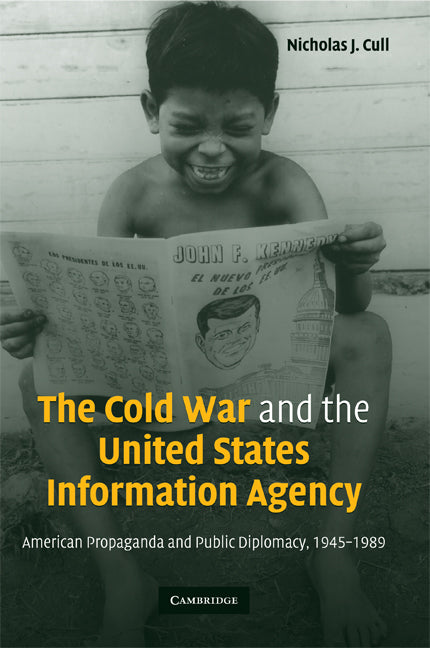Freshly Printed - allow 8 days lead
Couldn't load pickup availability
The Cold War and the United States Information Agency
American Propaganda and Public Diplomacy, 1945–1989
This book provides an exhaustive account of the United States Information Agency - an essential element of American foreign policy during the Cold War.
Nicholas J. Cull (Author)
9780521819978, Cambridge University Press
Hardback, published 30 June 2008
600 pages, 10 b/w illus.
26 x 18.5 x 3.5 cm, 1.18 kg
'[Nicholas Cull's] conclusions are based on a huge amount of evidence, which he presents in a lucid manner. This is an important book, if a melancholy one, and deserves to be read by historians and practitioners alike.' The Times Literary Supplement
Published at a time when the US government's public diplomacy has been in crisis, this book provides an exhaustive account of how it used to be done. The United States Information Agency was created, in 1953, to 'tell America's story to the world' and, by engaging with the world through international information, broadcasting, culture, and exchange programs, became an essential element of American foreign policy during the Cold War. Based on newly declassified archives and more than 100 interviews with veterans of public diplomacy, from the Truman administration to the fall of the Berlin Wall, Nicholas J. Cull relates both the achievements and the endemic flaws of American public diplomacy in this period. Major topics include the process by which the Truman and Eisenhower administrations built a massive overseas propaganda operation; the struggle of the Voice of America to base its output on journalistic truth; the challenge of presenting civil rights, the Vietnam War, and Watergate to the world; and the climactic confrontation with the Soviet Union in the 1980s. This study offers remarkable and new insights into the Cold War era.
Prologue: the foundations of US information overseas
1. Getting the sheep to speak: the Truman years, 1945–53
2. Mobilizing 'the P-Factor': Eisenhower and the birth of the USIA, 1953–6
3. In the shadow of Sputnik: the second Eisenhower administration, 1957–61
4. Inventing truth: the Kennedy administration, 1961–3
5. Maintaining confidence: the early Johnson years, 1963–5
6. 'My radio station': the Johnson administration, 1965–9
7. Surviving détente: the Nixon years, 1969–74
8. A new beginning: the Ford administration, 1974–7
9. From the 'two-way' mandate to the second Cold War: the Carter administration, 1977–81
10. 'Project Truth': the first Reagan administration, 1981–4
11. Showdown: the second Reagan administration, 1985–9
Epilogue: victory and the strange death of the USIA, 1989–99
Conclusion: trajectories, maps, and lessons from the past of US public diplomacy.
Subject Areas: Politics & government [JP], 20th century history: c 1900 to c 2000 [HBLW], History of the Americas [HBJK]


